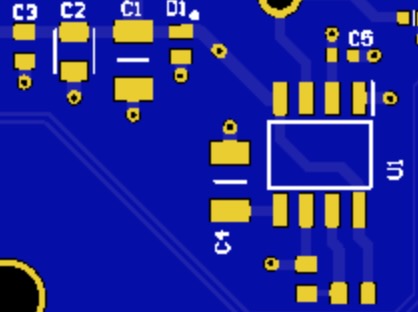Exact Measurement? For Innovation, and Progress
A coherence-based Noise Reduction System, approaches a time-independent reference, or exact standard, for the measurement of time. Download summary of scientific research here.
Increased Signal-To-Noise Ratio in the Time Domain at the Envelope of an Audio Signal Without External Amplification Or Filtering

Areas of Application of Coherence Technology Pdf download here: https://www.upgradingtechnology.com/support-files/areasofapplication.pdf
According to quantum physics it is possible to verify an increase in the underlying coherence of an audio signal by observing a scientifically significant increase in the signal-to-noise ratio in the time domain at the envelope of that audio signal.
A study was conducted to see how Coherence Technology (CT) would affect the signal to-noise ratio in the time domain of the envelope of an audio signal. Sound Technologies Spectra Plus software-based signal analyzer was used to measure the left output channel of a CD player. Tests were done with pre-recorded selections of flute and acoustic guitar. Each instrument was measured separately, first without using the CT. Then with the CT connected to the CD player.
When the CT equipment was connected, the results showed a significant increase in signal-to-noise-ratio (an average of 20% and up to 95%), more detailed information, greater dynamic range, as well as more; clarity, resolution, intelligibility, and fullness of sound.
Click here for specifications of test.
Later, with the more advanced Coherence Technology equipment and a hardware-based signal analyzer, the increase in the signal-to-noise ratio was even more significant.
Further studies with Coherence Technology found that as signal-to-noise ratios increase, actual intelligibility increases (see research on increases in EEG brain coherence), and listener fatigue decreases. These changes indicate that the application of CT is effective in increasing the underlying coherence of an audio signal.
This increase in underlying coherence has benefits in terms of the overall technological performance and compatibility of electronic signals, and for the living systems influenced by those signals.
Applications

Increasing Signal-to-noise Ratio With Coherence Technology Has Many Potential Applications
The significant improvement in signal-to-noise ratio (SNR) as evidenced by the research findings on Coherence Technology (CT) underscores its importance not only in audio signal enhancement but broadly across technological and scientific fields. By approaching a time-independent standard for measurement, CT provides a compelling example of how refining our understanding and control of SNR can propel technology and scientific progress.
The benefits drawn from these findings highlight several important dimensions:
1. **Improved Precision and Clarity**: The research showed that utilizing CT enabled a remarkable enhancement in the clarity, resolution, and fullness of audio signals. This kind of improvement is essential in fields where data integrity and signal clarity are paramount, such as telecommunications and high-fidelity audio broadcasting.
2. **Greater Dynamic Range and Detail**: The application of CT not only heightened the SNR but also extracted more detailed information from the audio signals. This attribute is crucial in scientific research fields like astronomy, where capturing subtle details from vast distances can be the difference between a major discovery and a missed opportunity.
3. **Reduced Listener Fatigue and Enhanced Intelligibility**: With higher SNR, the strain on the listener is considerably reduced, promoting longer and more focused engagement. This aspect is incredibly beneficial in educational technologies, professional settings requiring prolonged attention to communications, and in consumer electronics, enhancing user experience.
4. **Application Across Various Technologies**: The principles demonstrated by CT can be translated into various applications such as medical imaging, where increased SNR can lead to better diagnostic images, and in automotive technology, where clearer sensor signals are critical for safety in autonomous vehicles.
5. **Scalability and Future Possibilities**: The ability of CT to be integrated into existing technologies and enhance their performance without needing external amplification or filtering suggests a scalable solution that can be broadly applied, paving the way for substantial improvements in both legacy and emerging technologies.
In conclusion, the advancements demonstrated by the application of Coherence Technology in increasing SNR show promising implications not just for audio systems but for a broad spectrum of technologies. This underscores the crucial role of enhanced SNR in driving the next wave of innovations that could redefine effectiveness and efficiency across multiple domains. As we push the boundaries of what's possible with higher SNR, we can expect to see profound impacts on industrial capabilities, scientific research, and consumer technologies.